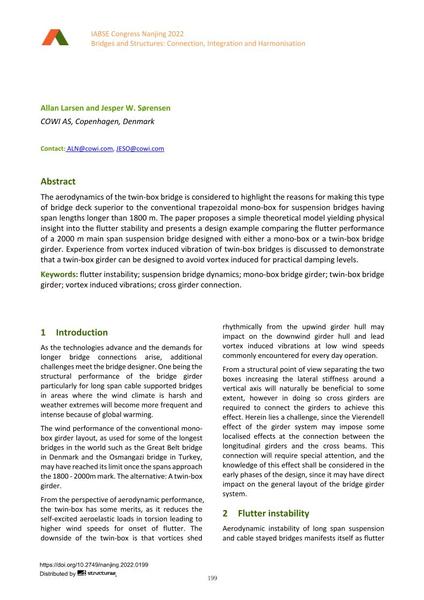Benefits and Challenges of the Twin-box Bridge Girder

|
|
|||||||||||
Détails bibliographiques
| Auteur(s): |
Allan Larsen
(COWI AS, Copenhagen, Denmark)
Jesper W. Sørensen (COWI AS, Copenhagen, Denmark) |
||||
|---|---|---|---|---|---|
| Médium: | papier de conférence | ||||
| Langue(s): | anglais | ||||
| Conférence: | IABSE Congress: Bridges and Structures: Connection, Integration and Harmonisation, Nanjing, People's Republic of China, 21-23 September 2022 | ||||
| Publié dans: | IABSE Congress Nanjing 2022 | ||||
|
|||||
| Page(s): | 199-207 | ||||
| Nombre total de pages (du PDF): | 9 | ||||
| DOI: | 10.2749/nanjing.2022.0199 | ||||
| Abstrait: |
The aerodynamics of the twin-box bridge is considered to highlight the reasons for making this type of bridge deck superior to the conventional trapezoidal mono-box for suspension bridges having span lengths longer than 1800 m. The paper proposes a simple theoretical model yielding physical insight into the flutter stability and presents a design example comparing the flutter performance of a 2000 m main span suspension bridge designed with either a mono-box or a twin-box bridge girder. Experience from vortex induced vibration of twin-box bridges is discussed to demonstrate that a twin-box girder can be designed to avoid vortex induced for practical damping levels. |
||||
| Copyright: | © 2022 International Association for Bridge and Structural Engineering (IABSE) | ||||
| License: | Cette oeuvre ne peut être utilisée sans la permission de l'auteur ou détenteur des droits. |
||||

